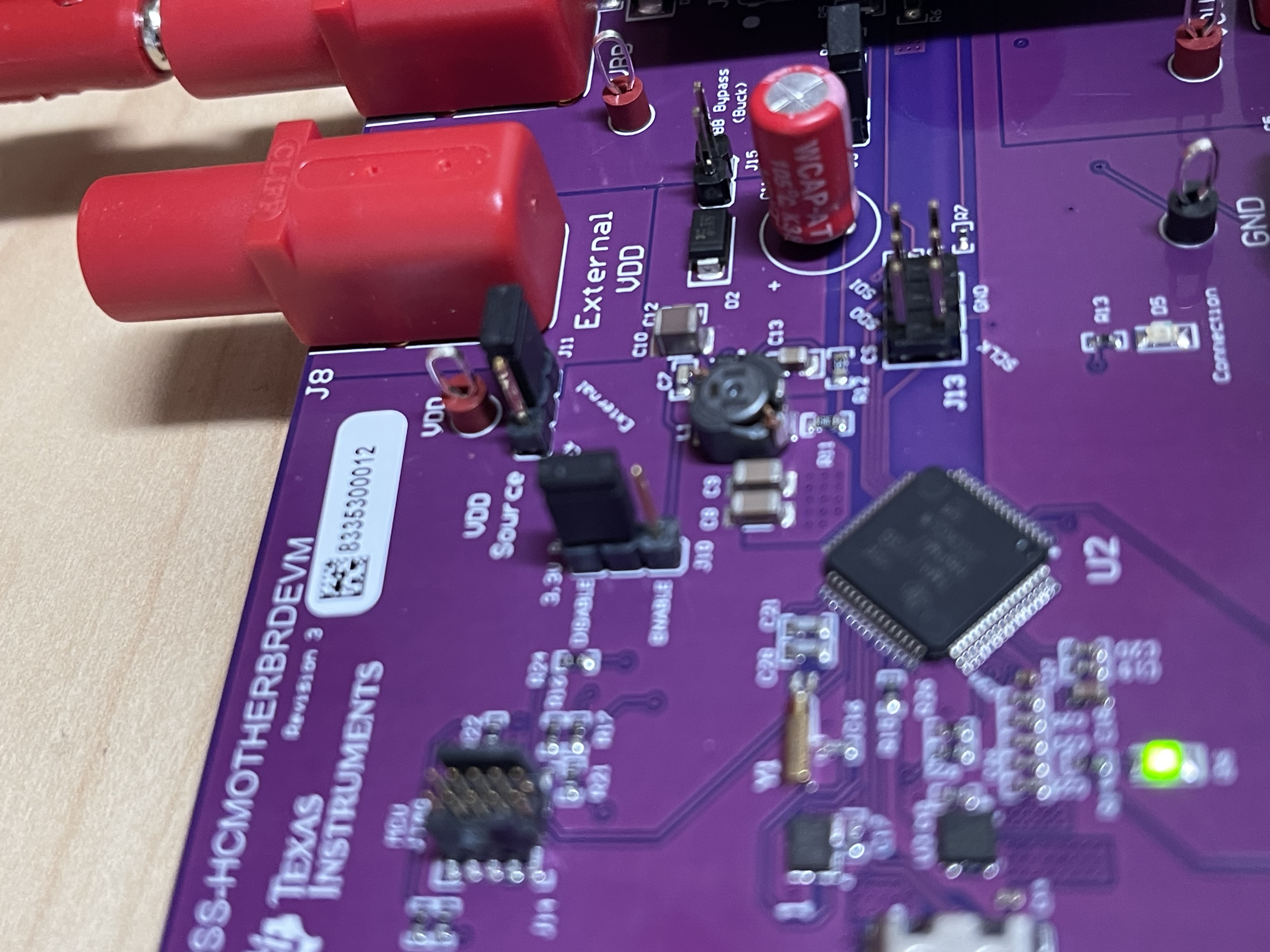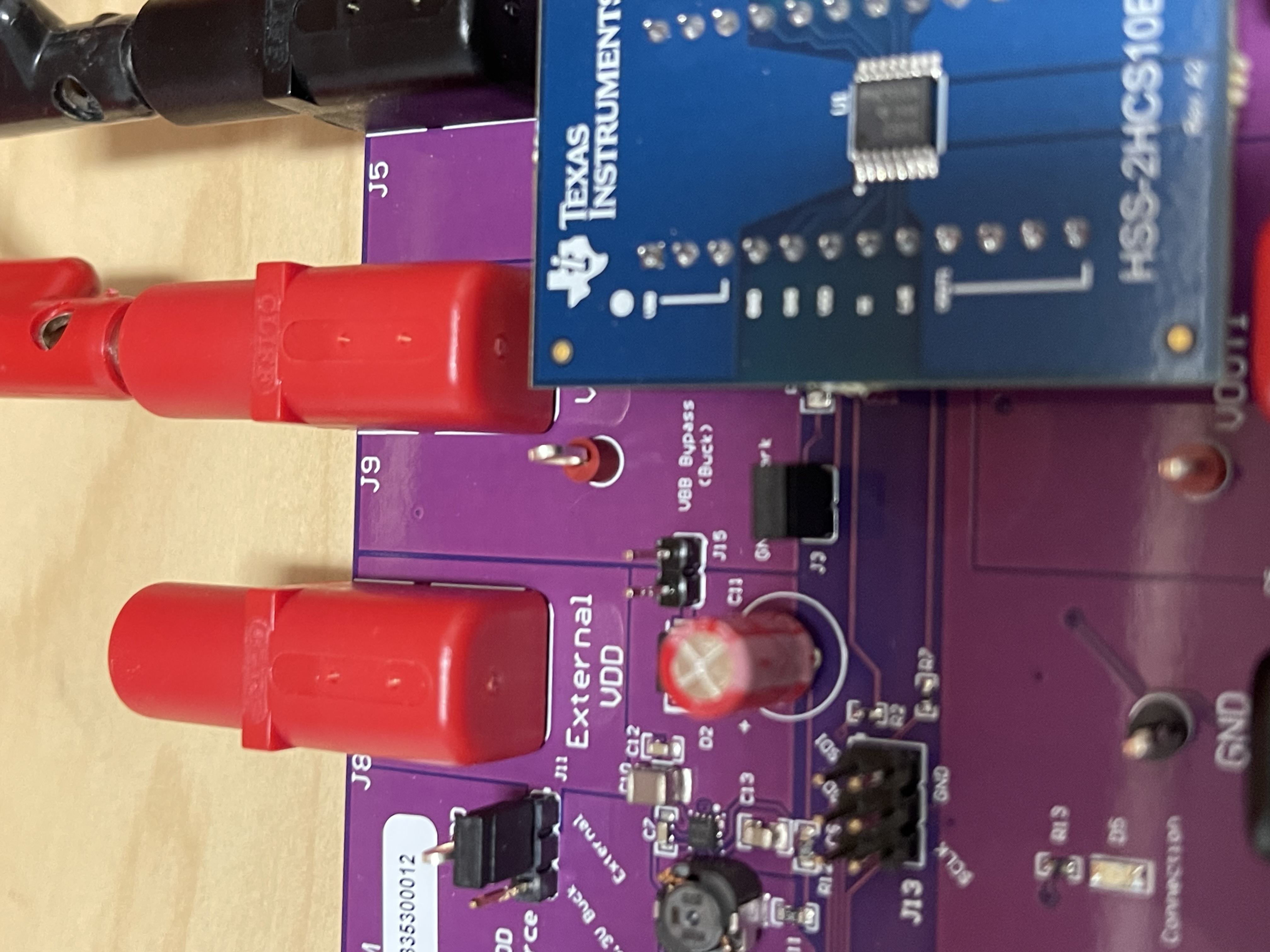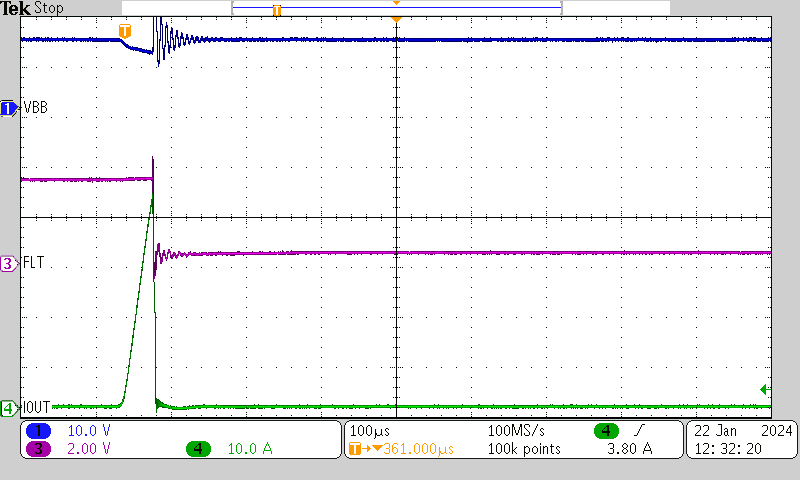SLVUCR9B August 2023 – January 2024 TPS2HCS10-Q1
2.6 Transient Testing
By default, the smart fuse evaluation module is used to optimize out-of-box user experience and ease-of-use. Support has been added to support transient testing such as short-to-ground without damaging any onboard component. TI recommends that if any voltage spike is to occur on the supply/VBB line (such as the one that occurs in a short-to-ground scenario), then the EVM is configured to bypass the onboard buck converter and instead source VDD externally. This can be done by disconnecting the J15 jumper and setting J11 to the external. This jumper configuration can be seen below.
 Figure 2-7 Disable Buck Converter
Figure 2-7 Disable Buck ConverterOnce configured to use an external VDD source, connect a compatible (generally 5V or 3.3V) power supply to External VDD as seen below.
 Figure 2-8 Isolate Supply Line
Figure 2-8 Isolate Supply LineWith an external power supply sourcing VDD, a short-to-ground or other transient condition can be safely applied to the EVM. An example of a short-to-ground condition can be seen below in Figure 3-9.
 Figure 2-9 Short-to-Ground Event
Figure 2-9 Short-to-Ground Event